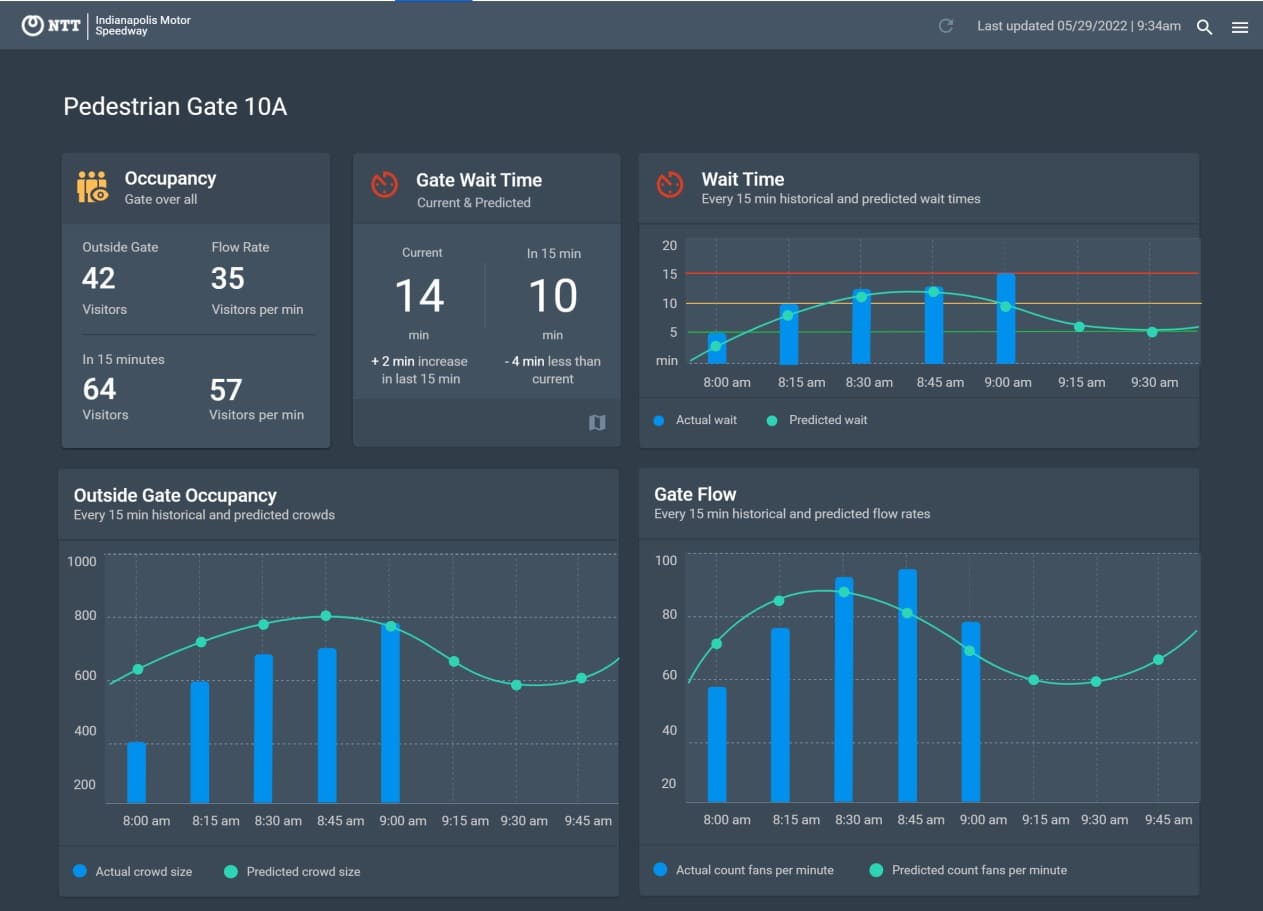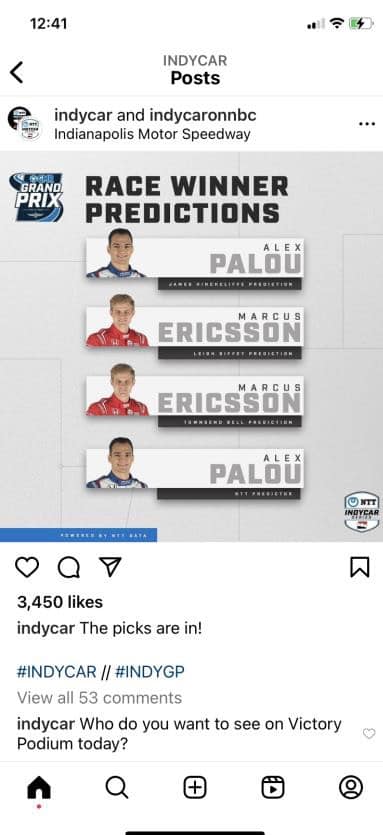Indy 500 Tech Predicts The Future Of Racing

FUTURE PERFECT: NTT, title sponsor for the Indianapolis 500, set for May 28, uses artificial intelligence to predict wait times for fans at the gates and race outcomes. (Courtesy vendor)
The Indianapolis 500 is known as the world’s largest single-day sporting event with 300,000 in attendance, so it should come as no surprise its technology partner and title sponsor is similarly robust.
(This story first appeared at VenuesNow)
NTT, a global information technology and communications company headquartered in Japan, renewed its title sponsorship deal in March with the IndyCar Series, extending the agreement the firm initially signed prior to the 2019 Indy 500.
The deal covers the 17-race NTT IndyCar Series, including the 107th running of the Indy 500 on May 28, and the NASCAR Brickyard weekend, set for Aug. 11-13.
“If you can’t measure it, you can’t manage it,” said Bennett Indart, vice president at Smart World Solutions, NTT, a division of Japanese telecom giant NTT, which employs 300,000 workers globally. Indart, based in the Bay Area, is talking about data and echoing the famous quote of noted management guru Peter Drucker.
The partnership, which started with cameras and software to aid crowd management, has evolved to sophisticated racing analysis, increasing fan engagement and and predictive analytics to the point of predicting race winners.
“When Penske Entertainment purchased the Indianapolis Motor Speedway and the series from Hulman Sports (in 2019), they wanted to focus on fan experiences in particular,” said Indart. To do that, NTT took experience from the Smart City program it launched in Las Vegas, which used sensors, AI and machine learning to help city leaders manage and improve life for residents and tourists. The platform was adapted for the Indianapolis Motor Speedway, which in recent years adopted an all-digital ticketing system.
“Our use cases in the beginning started at ingress of fans and helping the operations team that sits in the pagoda (command center tower) at the speedway, having the ability to use artificial intelligence and advanced analytics to count the number of people outside of a gate or amassing outside of a gate,” Indart said.
That information, along with real-time data from tickets scanned at the gates, provides track operators with a clear picture of crowd movement. For example, this year at a Grand Prix IndyCar Series race, NTT saw a 45% improvement in the amount of time it took fans to enter two specific entrances, Indart said.

NTT’s Smart Venue platform can predict wait times and monitor crowd activity during an event.
“The speedway was built in the early 1900s, and this system makes it a much more modern stadium,” Indart said. “For fan engagement and crowd control, the Smart Venue program has achieved what we had originally hoped that it would, allowing fans to be more comfortable and confident in their approach to entering the raceway. It’s been done without having to do a lot of rip and replace; we were able to utilize a lot of data they already had access to.”
For the Indianapolis Motor Speedway, 25 cameras are installed at the gates to help monitor and track crowd movement, The massive track has 250,000 permanent seats, 25 entry gates and six tunnels. NTT’s Smart Solutions have been enabled in the month leading up to the race to monitor lines and gate traffic, which allow staff to better manage guests onsite and assist in wayfnding efforts.
That information is accessible on the web and through the IndyCar mobile application developed by NTT Data, alerting fans on wait times and the quickest routes from the gates to concession stands to the Snake Pit concert areas. Performances this year at the Pit, which sees crowds of up to 50,000 on race day, include electronic artists Kaskade, Subtronics, Shaquille O’Neal’s DJ Diesel, John Summit and Jauz.
In addition to integrating crowd control data the hands-on partnership has turned toward increasing fan interest in the IndyCar Series as a whole, geared to how consumers view and engage with the sport.
“We’ve pointed that same Smart platform at the race itself,” said Indart. “On each of the cars, there’s about 140 different sensors and the telemetry coming off of the vehicles is quite rich, everything from all the mechanical parts and the usage of fuels and tires and things like that, plus things like G-forces the driver is feeling and pressure when you brake, things like that.”

Alex Palou won the GMR Grand Prix on May 13, predicted by NTT Data. (Courtesy vendor)
NTT generates more than 40,000 predictions based on these data points, which are relayed across NBC’s live broadcast and IndyCar social media. The technology also predicts who could win the 500, based on factors such as pit strategy and driver behavior.
“On two occasions this year, we have predicted the winner, which is kind of fun,” said Indart. “There’s an extensive audience of folks not at the race, watching on NBC and looking at Twitter and Instagram, so it’s fun to start that dialogue. We call it telling data stories.”
NTT Data has used its Smart platform with other sports venues and operators such as Little Caesars Arena and Comerica Park in Detroit; Nationals Park in Washington, D.C.; and Maple Leaf Sports and Entertainment. Some factors are common across all types of venues.
“The most important thing is that they already own their data. We do not take ownership of it. We’re stewards of it,” Indart says. NTT can provide information to different platforms through its application programming interface (API) and other dashboards. “We curate data for (venue operators and owners) and push that data back because there’s lots of useful ways that they can use that. There’s a lot of different delivery mechanisms.”
 Daily Pulse
Subscribe
Daily Pulse
Subscribe

